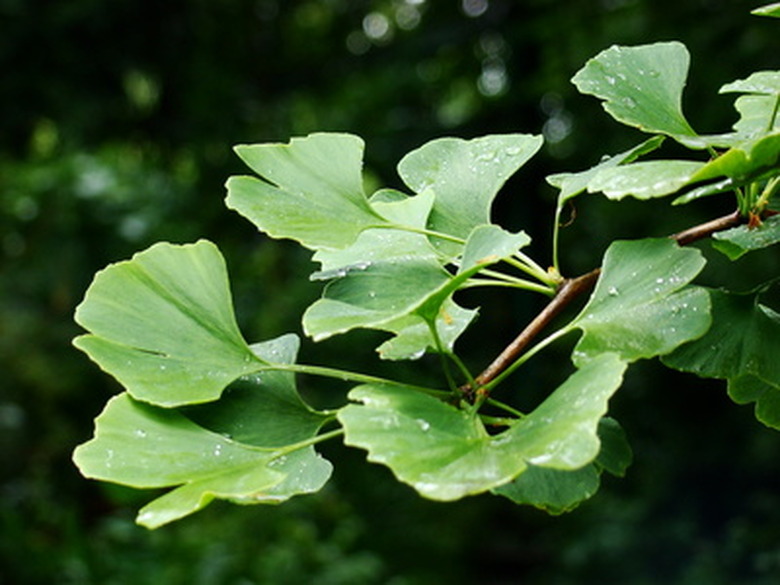How To Grow A Ginkgo Tree Indoors
Things Needed
-
Pot
-
Gravel or pottery shards
-
Compost
-
Grit
-
Plant stand
-
Water tray
-
Fertilizer
Ginkgo biloba is an ancient tree and considered a living fossil. This last remaining member of the Ginkgoaceae family traces its origins back 150 million years or more. Ginkgo trees are popular in a landscape where they can tolerate poor soil, pollution and little nutrition. As a house plant, the ginkgo requires minimal care to remain healthy and vibrant. Ginkgo trees have bright-green, fan-shape leaves. Several varieties have leaves that turn gold in the late summer and fall.
Step 1
Plant in a container that's one or two sizes larger than the ginkgo's nursery pot and has drainage holes in the bottom. Place a 1-inch layer of gravel in the bottom or lay pottery shards loosely over the holes to prevent soil from draining away while still allowing the water to seep through.
Step 2
Fill the pot half way with a mix of 9 parts compost potting mix and 1 part grit. Remove the ginkgo tree from the nursery pot by turning the tree on its side and gently working the pot away from the root system.
Step 3
Hold the ginkgo tree over the container so that the base of the stem is 1 inch below the lip of the pot. Fill in or remove soil as necessary until the tree rests on its own in that position. Fill in around the root ball up to the base of the stem with the compost and grit mixture, leaving 1 inch between the soil line and the lip of the pot.
Step 4
Place the pot in an area that gets full or filtered sun. Ginkgo trees are well adapted to cool or warm household temperatures. Place the pot on a plant stand or raised on brick or tiles to improve drainage. In indoor spaces, protect surfaces by putting the pot, on the plant stand or tiles, in a tray to catch water. Empty the tray frequently to prevent water from standing around the base of the pot.
Step 5
Water in the spring and summer when the top 1 inch of soil feels dry to the touch. Soak the pot until water drains from the holes in the bottom. In the fall and winter, wait until the top 2 to 3 inches of soil dries before watering.
Step 6
Fertilize in the spring using a slow-release balanced fertilizer that contains nitrogen, phosphorous and potassium (NPK), per label instructions. A 10-10-10 fertilizer is suitable.
Step 7
Perform light trimming any time during the year. When necessary, perform heavy structural pruning between January and February when the tree is dormant. Ginkgo trees respond well to heavy pruning and are common bonsai trees. When pruning, avoid removing more than 1/3 of the total canopy in one year.
